It is not really a surprise to learn that my interview with Irvine Welsh is to take place in a pub. At 11 in the morning. As Welsh is the hard-living author of one of the most famous books about substance abuse, this makes perfect sense. What actually happens does not. When the day of our meeting arrives, he requests instead that we meet in a Starbucks. Even more puzzlingly, he then proceeds to order a green tea, which he chinks against my mug of coffee.
"Cheers," he smiles.
What was I expecting? Certainly not this. For a time during the late Nineties, Welsh was the enfant terrible of the literary scene, lighting it with Trainspotting, the tale of a group of Scottish heroin junkies, and following it up with such titles as Porno, The Acid House (in which a drug user and a baby swap minds) and Filth, which was narrated both by a sociopathic policeman and, er, a tapeworm.
He says that he himself took heroin only for 18 months, but then I once read about someone who had to go straight from a party at Welsh's Edinburgh home to the nearest hospital, and I rather get the impression that his partying days stretched on for much longer than that.
But he is so mild-mannered and calm and lovely, it is hard to equate the man that sits in front of me sipping green tea with any of the pictures painted of him, sometimes by him. For instance, he writes mostly about the working-class people in his native Scotland, but he lives in Miami now, with his 28-year-old wife, whom he met in a bar in Chicago. I say that I wouldn't have him down as a Miami kind of man.
"Oh, but it's f---ing great there. I just love the weather. I live on Miami Beach, which is all boutique hotels and cocktails. I do sometimes go along to smart parties in my white suit, but I wouldn't really recognise any famous people if they were there because I'm not very good at star-spotting. There is a great subculture there, if you dig deep enough."
Then he starts talking about the Miami doctor who recently lasered his eyes, and I wonder if he isn't just having me on. "He is the same guy that the Miami Dolphins use. They give you a Xanax and you don't feel a thing. Then you walk out and you can read all the billboards clearly. Amazing."
The Miami Dolphins? Xanax? It's all a long way from Edinburgh's port district, where he grew up with his waitress mother and docker father. Yet Welsh still manages, somehow, to observe the working classes. His latest project is called Good Arrows, a one-off comedy for ITV which he has written and directed. It is set in the world of darts, though he says it is really about the cult of minor celebrity.
"You can't satirise darts, because it's hyper-real as it is; there's already enough over-the-top madness to it. So we thought we would use it as a backdrop to this old darts player making a comeback."
There is something about darts that Welsh intrinsically likes, though he says he isn't very good at playing the game. "I think it is the last bastion of traditional British culture left in this globalised era. Everything now has been changed by the media. Darts hasn't been touched by the PC culture. It is still very unslick, unpretentious and British."
He sips on his green tea.
"And I think it's great that people still go to pubs and socialise with each other. Face to face. The idea of just sitting at home on Facebook worries me. I think we should all get out more."
Welsh has a whole host of film projects on the go – mostly adaptations of his own work – and I ask if he sees himself now as a filmmaker or a novelist.
"Neither. I just see myself as a storyteller."
He says he no longer really associates himself with Trainspotting. "I think it is yours when you are writing it, but when you put it out there you have to be generous and it becomes everybody's. You know, it went from my book to John Hodge's screenplay to Danny Boyle's film to Richard Branson's train advert. I do get a bit sick of seeing that poster, but it's all money in the coffers and I am always amazed that each year it finds a new audience. When I started doing readings of it, the people who came were all my peers, but I just did a book tour in America and everyone who turned up was 14-year-old schoolchildren."
Does he feel he has sold out, moving to America? I say that it must be difficult to write about the people
of your home when you live some 3,000 miles away from it. He counters that he hasn't really lived in Scotland since he was about 17.
"I've not lived there since for more than two or three years at a time. I am always coming and going. I like having somewhere to go back to, too. It's part of me, Scotland. I'm still immersed in it even though I am not there."
Welsh recently turned 50, but he says he doesn't think he has changed one jot since he was 26, when he worked for Hackney council (he has also been a television repairman, a punk-rock musician and, strangely, a property speculator).
"It's awful turning 50. I hated it. Really, it's awful turning any birthday after about 30. You do all your forming in your teens and twenties and then I think that essentially you are the person you will always be. You learn more details but
you don't get any wiser. You just fall apart very slowly after that. All downhill," he laughs.
Recently, he went to DJ for a friend who owns a club in Edinburgh (he has had a long love affair with house music). "I hadn't DJed for about seven years. And I turn up with a big box of vinyl records and they just had one turntable because everyone uses their laptops. There were great pauses between each song while I changed the record. Humiliation is forcing me to digitise my life."
He chuckles and knocks back his tea.
"But DJing is the only way I can really go to clubs any more. Otherwise people just think I am a sleazy old man. I'm too old. I can't cut it on the dancefloor. I am self-conscious and crumbly and sweaty; my knees are going, as is my general elasticity. Having said that, I've started holding raves at my home for my older gentlemen friends, where we chill out and chat. We listen to old-school house, drink cups of cocoa and put on our carpet slippers."
A small laugh, and with it the knowledge that for Irvine Welsh, the choice of drink may have changed, but the mindset is pretty much the same.




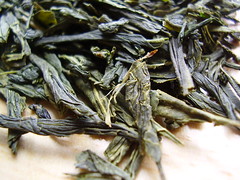
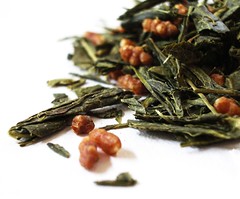
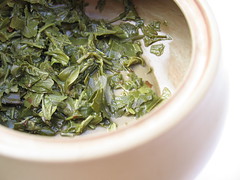

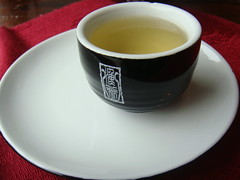





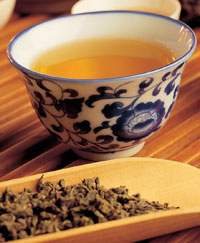






 But green tea is perhaps best known for its high levels of anti-oxidents.
But green tea is perhaps best known for its high levels of anti-oxidents. 